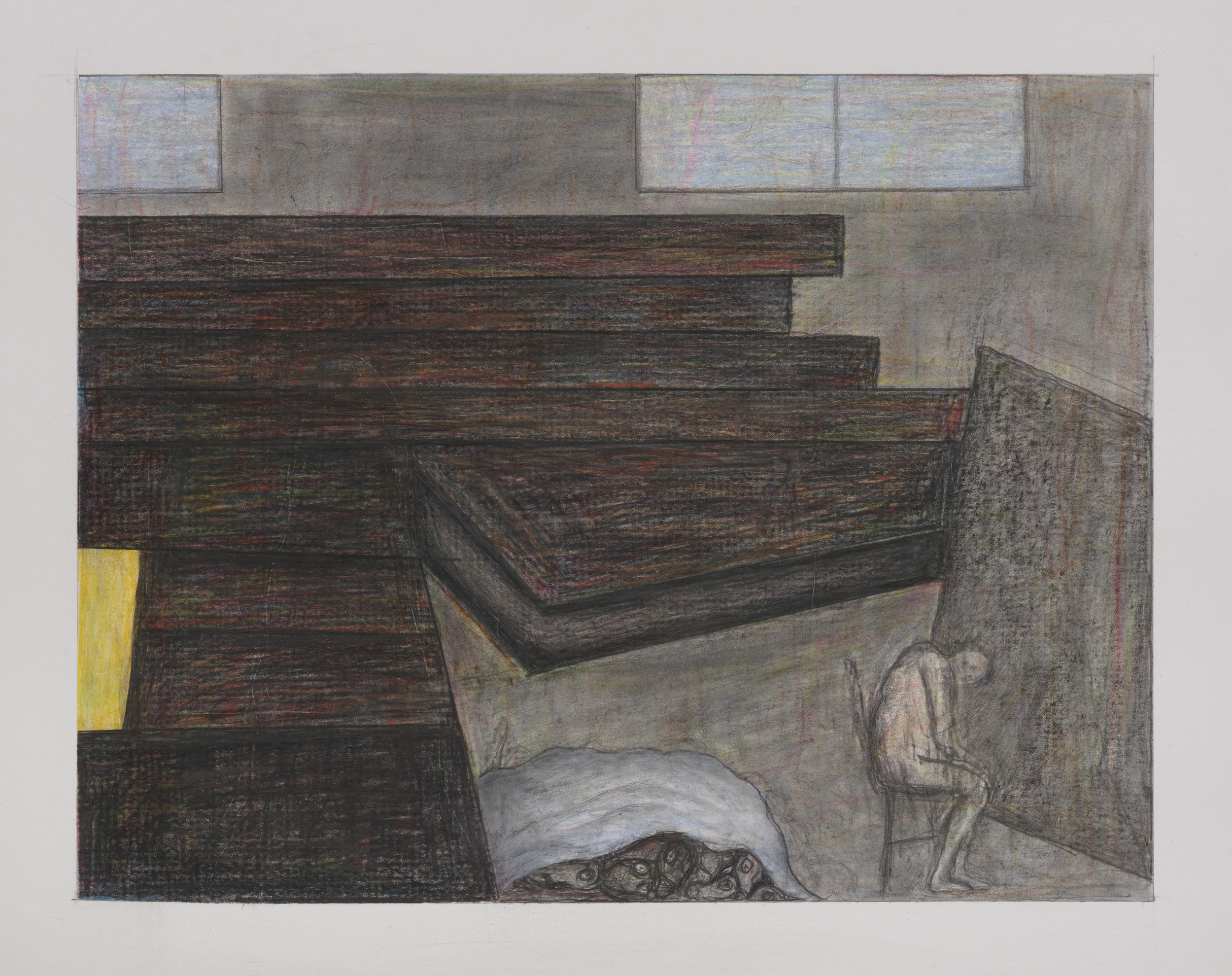Over the course of a seven-decade career, the one constant in Brenda Goodman’s practice has been drawing. The fluidity of her line parallels her thought process and openness to taking unexpected paths, often prompted by a memory or life event. In 2020, she told Clarity Haynes in a BOMB magazine interview that her work is about “pain and sadness,” adding that “everything I am at seventy-six years old is in the paintings, and even though they’re not gut-wrenching, they’re still me, and all my life experiences are in them.” Alongside, and sometimes in tandem with, her paintings, Goodman has made nuanced portraits of her pets as well as line drawings that are in conversation with Alfred Kubin’s macabre subjects.
Often small, these works continued to expand in the mind of this viewer long after seeing them. Paul Klee famously described his process as “taking a line for a walk.” In counterpoint to his statement of authorial control, I want to suggest that Goodman’s line takes her to places where trauma and healing, grief and comfort coexist. Looking at her graphic work — spanning from her years as a precocious student in Detroit in the 1960s to the present, when I recently visited her studio — it seemed obvious to me that a museum should devote an exhibition to her drawings, accompanied by a substantial publication.
During my studio visit, Goodman, who was preparing for knee-replacement surgery, showed me a suite of 24 drawings in colored pencil, graphite, watercolor, and other media. (She has since added to the suite.) Memory, imagination, and dreams all play a part in these moody works, which reminded me of a stage set combining different aspects of her lexicon, from bereft figures and claustrophobic interiors to geometric and biomorphic abstraction. They seem to tell a story, but one that can only be completed by the viewer.
One or more figures inhabit some drawings; when two are present, they exist in isolation from each other. The abstract form evokes a body in others. In one melancholy drawing, a reddish slit punctures a black boulder-like form rendered in graphite, and surrounded by spiky branches, veins, or fissures, suggesting a tormented body. In another, a naked human figure sits in a chair, hunched, looking downward, in the lower right-hand corner; in front of the figure is a large rectangle that might represent a blank canvas, while behind, hidden beneath what could be an unrolled canvas, is a row of heads with eyes peering out at us. The rest of the drawing is consumed by the emptiness of the room. In the far left edge, a narrow yellow rectangle interrupts the gray and reddish-brown palette and echoes the strip of yellow on the first drawing’s left edge. Are they signs of light in this gray, gloomy world or of false hope?

A different drawing shows two cylindrical heads tilting toward each other on a red and black field. The heads are featureless except for their open mouths and sharp teeth. Is the black cylindrical shape on left a figural presence, or maybe even a doppelganger? What do these lingam-like forms signify? Goodman has conjured up a world whose figures speak a language rife with feeling, yet we cannot translate it into anything literal.
Sometimes the shapes represent a house or the stacked logs of a stockade. In one work, blood drips from between the logs, stacked vertically on a red ground like a section of a fort wall. A shorn log rises diagonally from the lower left edge, pierced near the top by a stick from which a torn white flag with pale red stains hangs limply. What does this site demarcate? Did a battle take place here? Why is it abandoned? I feel it would be a disservice to these drawings to try and answer these questions. They invite us in, but remain just beyond comprehension; explaining them trivializes them. A wave of inconsolable grief animates these haunted artworks. There are no signs of reason or justice to be found in Goodman’s bleak world. The figures and scenes are testaments to survival, but the cost is clear.







